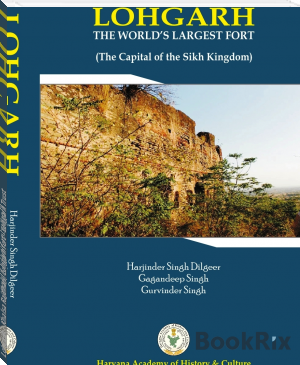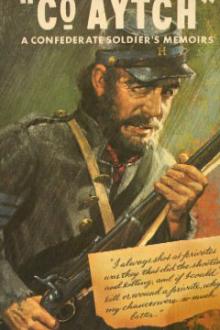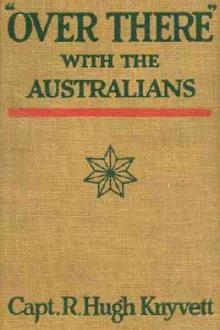Lohgarh - Khalsa Rajdhani, Lohgarh fort - Lohgarh Trust by S. Daljeet Singh Bajwa (books that read to you .TXT) 📕

- Author: S. Daljeet Singh Bajwa
Book online «Lohgarh - Khalsa Rajdhani, Lohgarh fort - Lohgarh Trust by S. Daljeet Singh Bajwa (books that read to you .TXT) 📕». Author S. Daljeet Singh Bajwa
In the seventeenth century, the Mughal Empire became the richest economy of the world and the GDP of the Indian sub-continent reached the highest level and it controlled 24.4% of the world’s economy.7 The Vanjaras being trading community played a significant role in raising the economic status of Mughals and being a trading community also helped in developing new market of products. Moreover the Vanjaras were nomadic and travelled through the country for the supply of goods. Their knowledge and trading skills helped in increasing their trade and gradually the Vanjaras became the richest community in the nation. The Vanjara had disowned Varna system long ago and class category was established in tanda’s management system.8 A man was classified on the basis of duties performed and the prescribed status was not given any importance in the Vanjara culture.
Lakhi Rai Vanjara had eight sons: Nigahia, Hem Chand, Haarhi, Heera, Pundia, Bakhshi, Bala and Jawahar. All of them were a part of the army of Guru Gobind Singh and Banda Singh Bahadur. From among these Jawahar (later Jawahar Singh) embraced martyrdom in the battle of Fategarh Fort, Anandpur (on 30 August 1700), Hema (later Hem Singh)
In the battle of Tirgarh, Anandpur (on 16 January 1704) and Nigahia (later Nigahia Singh) embraced martyrdom in the battle of Amritsar (on 6 April 1709). The rest five were a part of the Banda Singh’s army; they too embraced martyrdom in different battles. Lakhi Rai Vanjara had 17 grandsons and 24 great of grandsons. All of them too embraced martyrdom in different battles.
In 1630s, the ancient city of Delhi was a small town. It had remained the capital of several kingdoms from time to time. It was constructed, populated, and, then destroyed again several times. During the reign of Shah Jahan, Delhi was a semi-deserted town. Though Sher Shah Suri’s descendants (known more as Suris) ruled over it till 1556 but they could not achieve a glorious state. Delhi had several old Forts; some of them were severely destroyed hence were deserted. Islam Shah Sur (ruled 1545-1554) too had built a Fort (Salimgarh Fort just behind the Red Fort). After the defeat of the Suris, the Mughals occupied Delhi. When Shah Jahan became Emperor in 1628, he decided to build a new Fort. He asked Ahmed Lahori to plan a map of the new Fort. On 12 May 1639, final orders were issued for beginning the construction. The very next day foundation stone was laid and after 9 years it was completed and was ready to be occupied on 6 April 1648. Shah Jahan named this Fort as Qila Mubarik but because it was made of red stones, it was known more as Lal Qila (Red Fort).9
Delhi’s Red Fort covers an area of 254.67 acres. Around it a 2.41 kilometer long wall has been built. The height of this wall is 18 to 31 meters. Its main gate is towards the southern side and is known as Lahori Gate. Its second gate is known as Delhi Gate. The gate that opens on the side of Yamuna river is known as Paani Darwaza (Water gate). It has 14 gates including Kashmere Gate, Calcutta Gate, Mori Gate, Kabul Gate, Faresh Khana Gate, Ajmeri Gate and the Turkman Gate etc. In the Fort there is a baoli (well with steps). According to a local tradition, this baoli existed much before the construction of the Fort.
After the Fort was occupied, people began building houses around it. Jama Masjid, Chandni Chowk and Fatehpuri, were first to be built. They were followed by the construction of Sadar Bazar, Chawri Bazar,
Darya Ganj and other areas. At that time this area was known as Shahjahanabad (now old Delhi). The sandstone for the Red Fort and the new town was supplied by Lakhi Rai Vanjara.
It is believed that Lakhi Rai Vanjara was the owner of a large estate around Delhi. The whole of Raisina village and the present Malcha Mahal and the land around it belonged to him. The present Dhaula Kuan,10 Bara Khambha, Pusa Hill, Connaught Place, Rashtarpati Bhawan (earlier Viceregal House), Parliament House, Gurdwara Rakab Ganj… the land once belonged to Lakhi Rai Vanjara. District Lakhi sarai, in Bihar and Lakhi Vanjara Lake at Sagar district, M.P. are also associated with Bhai Lakhi Rai Vanjara. He is still remembered in the folksongs sung throught out the Indian Sub continent.
Lakhi Rai was also the owner of all the land of Dabar, i.e. between Sadhuara and Kala Amb. Lakhi Rai Vanjara had another Fort on the eastern side of Yamuna river, a few kilometres away from Mukhlisgarh; it is near Khawaspur and Haidarpur Ali Hinduwala villages (between Tanda and Rampur towns). Its ruins speak of its grandeur. This Fort too has stones like those of Lohgarh Fort. Around this Fort too, several wells built by Lakhi Rai Vanjara. It proves that he was the owner of this land as well (i.e. Thaska or may be from Raipur Rani, in Haryana to Dehradun in Uttrakhand). In the Punjab too, Lakhi Rai Vanjara had a sarai near Rajpura; it is still known as Sarai Vanjara.
Role of Pir Budhu Shah
In the history of Sadhaura and Lohgarh, the role of Pir Budhu Shah has great importance. His real name was Sayyad Badar-ud-Din. Being Sayyad (a descendant of the daughter of Hazrat Mohammed, the founder of Islam), he was also known as ‘Shah’ Ji and ‘Pir’ Ji. He was born on 13 June, 1647 and had his abode at Sadhaura. The Mughal Emperor (perhaps Akbar) had granted an estate to this family. He was a very polite person. When people bowed before him and touched his feet in reverence, he would stop them from doing so; rather he would ask them to call him Budhu Shah instead of Sayyad Badar-ud-Din Shah. He was such a down to earth personality.
Pir Budhu Shah and Bhikhan Shah of Thaska too were very friendly. It was due to his relations with Bhikhan Shah that he first met Guru Gobind Singh. Soon, Budhu Shah too became an admirer of the Guru. He would make frequent visits to the Guru. His wife and sons (Ashraf, Mohammed, Mehmood Bakhsh and Hussain) would also visit the Guru at Chakk Nanaki, Paonta Sahib and Anandpur. Budhu Shah was married to Nasiran (sister of Sayyad Begh, a general of the army of Mughal Emperor Aurangzeb).
Pir Budhu Shah played a noteworthy role in the edifying the Fort of Lohgarh. As per the known history, he and his father Sayyed Mohammad Ashraf remained a syndicate of Guru Tegh Bahadur and Guru Gobind Singh. The sons of Pir Budhu Shah embraced martyrdom fighting along with Baba Banda Singh Bahadur against the Mughal Emperor Bahadur Shah, in 1710, at Sadhaura. The family of the Peer Budhu Shah was one of the main landlords of Sadhaura. But being a God-loving family and a staunch supporter of humanity, the Sayyed families of Sadhaura were not happy with the orthodox policies of Aurangzeb and his predecessors. The mission of Guru Nanak appealed to the ancestors of the Peer Budhu Shah and they started following the ideology of Guru Nanak. When Guru Hargobind Sahib started the construction of Lohgarh Fort, Raja Shah Ibrahim Bala the grandfather of Peer Budhu Shah, accompanied Guru Sahib in the main survey of Lohgarh Fort. The location of Fort Lohgarh is near the pargana of Sadhaura and the Sayyeds of Sadhaura participated in the divine mission of Lohgarh Fort. Later, when Guru Har Rai Sahib stayed in this zone for 13 years, Sayyed Mohammad Ashraf, the father of Peer Budhu Shah played a significant role in the construction of Lohgarh Fort. The Sayyeds were a superior martial race army-men of the Mughals and their knowledge of the warfare certainly helped the Gurus for building better defences to fight against the mammoth army of Mughals. Bhai Lakhi Rai Vanjara and Bhai Makhan Shah Lubana were working in coordination with the Peer Budhu Shah and his ancestors for the construction of Lohgar Fort.
According to Nirmala Tradition, when Fateh Shah, the ruler of Garhwal attacked the Guru at Bhangani, on 18 September 1688, five
hundred Pathan soldiers, whom the Guru had employed at the recommendation of Budhu Shah, betrayed the Guru and joined hands with Fateh Shah. When the Pir came to know about their treason, he, along with his sons and 700 of his followers reached there and participated in the battle. In this battle two of his four sons (Ashraf and Mohammed) and his brother Bhure Shah embraced martyrdom.
No source of history confirms this story. First of all there were no salaried soldiers in the army of the Guru, so employing 500 Pathans in his army is not true. Secondly, this battle was held at Bhangani (about 20 km from Paonta Sahib). According to Sawroop Singh (in Guru Kian Sakhian, episode no 44), this battle was fought just on one day and continued only for 4-5 hours. Now, if the Pathan soldiers had deceived the Guru, how did Budhu Shah receive the news at Sadhaura (85 km from Bhangani) and when did he reach there to join the battle. There were no telephones, nor helicopters to enable him to get the news of treason to join the battle. So, this story seems to be a concocted one. Further Guru Kian Sakhian book mentions the names of all the prominent persons who participated in the battle; and Pir Budhu Shah’s name figures nowhere. But, one thing is evident that Budhu Shah had a very loving relationship with the Guru and he used to make frequent visits to the Guru at Paonta Sahib and, later, at Anandpur.
Usman Khan the chief of Sadhaura town did not like Pir Budhu Shah’s affinity with the Guru. One day he invited the Pir to join him for hunting and took him to the forest where he got him burnt to death. It happened on 21 March 1704. This news reached the Guru much later. By that time Anandpur was under siege and the Guru could not punish Usman Khan. When Banda Singh attacked Sadhaura on 5 December 1709, the family of Pir Budhu Shah helped him a lot. After having occupied Sadhaura Banda Singh arrested Usman Khan. Usman Khan was the killer of the Pir Budhu Shah, he was also known for his hatred for the non- Muslims. He would forcibly take away young Hindu girls and rape them. Banda Singh publicly executed Usman Khan for his crimes.
Mukhlisgarh and Lohgarh
Some historians have said that Banda Singh Bahadur captured Mukhlisgarh Fort and renamed it Lohgarh. One historian says that Banda Singh built a Fort near Mukhlisgarh village and named it Lohgarh11. In fact, there is no village known as Mukhlisgarh. We have maps drawn by Major James Rennel (1742-1830). He is known as the father of geography. In 1792, he published Memoirs: Maps of Countries between Delhi and Candahar. This book refers to Moklespore (Mukhlispur) “a place seven or eight kos from Sadhaura, near the northern hills and on the edge of a small hill, difficult of access, on which Islam Khan, son of Sher Khan Sur, in his day of brief authority, began to build





Comments (0)